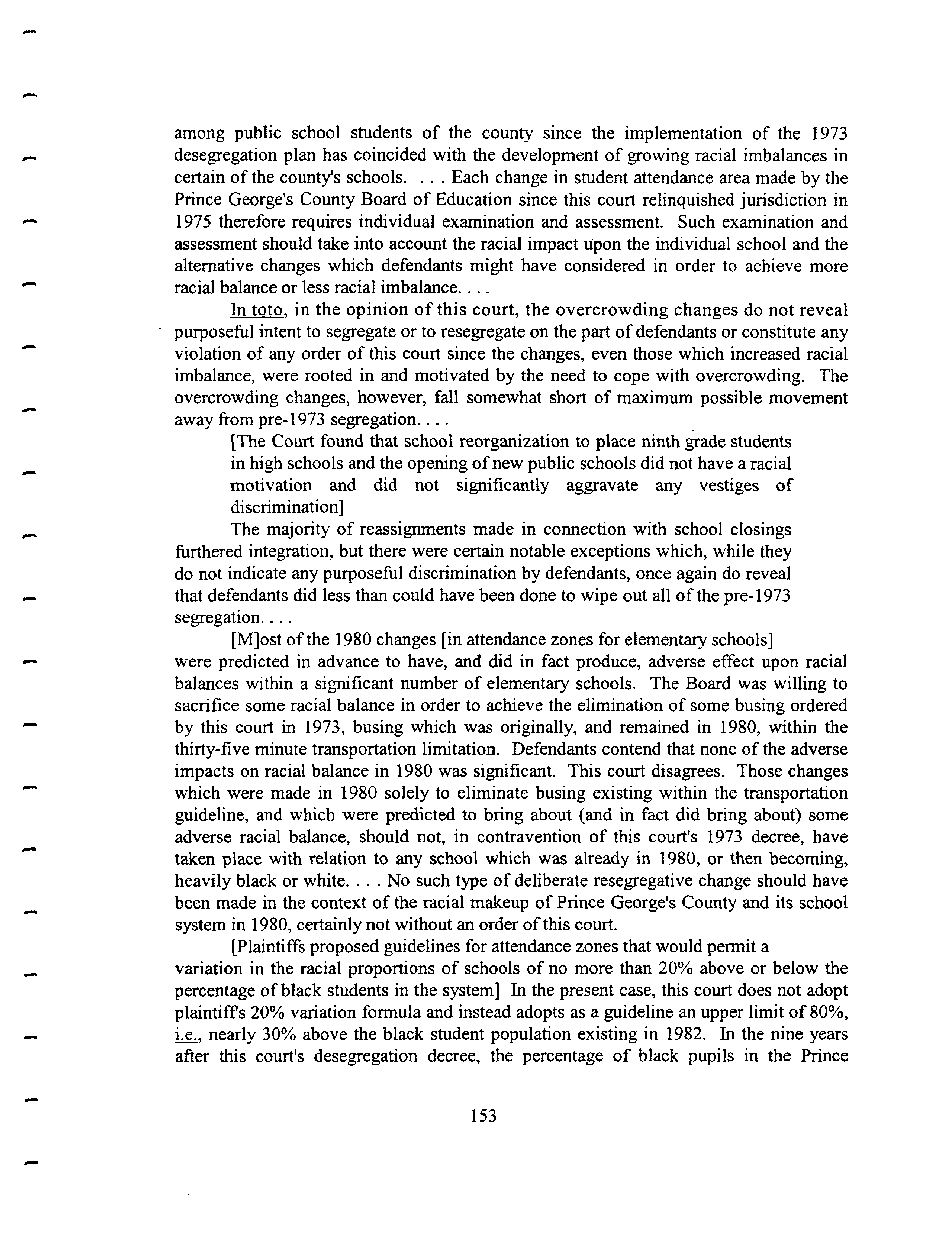|
among public school students of the county since the implementation of the 1973
desegregation plan has coincided with the development of growing racial imbalances in
certain of the county's schools. . . . Each change in student attendance area made by the
Prince George's County Board of Education since this court relinquished jurisdiction in
1975 therefore requires individual examination and assessment. Such examination and
assessment should take into account the racial impact upon the individual school and the
alternative changes which defendants might have considered in order to achieve more
racial balance or less racial imbalance.. ..
In toto. in the opinion of this court, the overcrowding changes do not reveal
purposeful intent to segregate or to resegregate on the part of defendants or constitute any
violation of any order of this court since the changes, even those which increased racial
imbalance, were rooted in and motivated by the need to cope with overcrowding. The
overcrowding changes, however, fall somewhat short of maximum possible movement
away from pre-1973 segregation. ...
[The Court found that school reorganization to place ninth grade students
in high schools and the opening of new public schools did not have a racial
motivation and did not significantly aggravate any vestiges of
discrimination]
The majority of reassignments made in connection with school closings
furthered integration, but there were certain notable exceptions which, while they
do not indicate any purposeful discrimination by defendants, once again do reveal
that defendants did less than could have been done to wipe out all of the pre-1973
segregation... .
[M]ost of the 1980 changes [in attendance zones for elementary schools]
were predicted in advance to have, and did in fact produce, adverse effect upon racial
balances within a significant number of elementary schools. The Board was willing to
sacrifice some racial balance in order to achieve the elimination of some busing ordered
by this court in 1973, busing which was originally, and remained in 1980, within the
thirty-five minute transportation limitation. Defendants contend that none of the adverse
impacts on racial balance in 1980 was significant. This court disagrees. Those changes
which were made in 1980 solely to eliminate busing existing within the transportation
guideline, and which were predicted to bring about (and in fact did bring about) some
adverse racial balance, should not, in contravention of this court's 1973 decree, have
taken place with relation to any school which was already in 1980, or then becoming,
heavily black or white. ... No such type of deliberate resegregative change should have
been made in the context of the racial makeup of Prince George's County and its school
system in 1980, certainly not without an order of this court.
[Plaintiffs proposed guidelines for attendance zones that would permit a
variation in the racial proportions of schools of no more than 20% above or below the
percentage of black students in the system] In the present case, this court does not adopt
plaintiffs 20% variation formula and instead adopts as a guideline an upper limit of 80%,
i.e.. nearly 30% above the black student population existing in 1982. In the nine years
after this court's desegregation decree, the percentage of black pupils in the Prince
153
�
|

